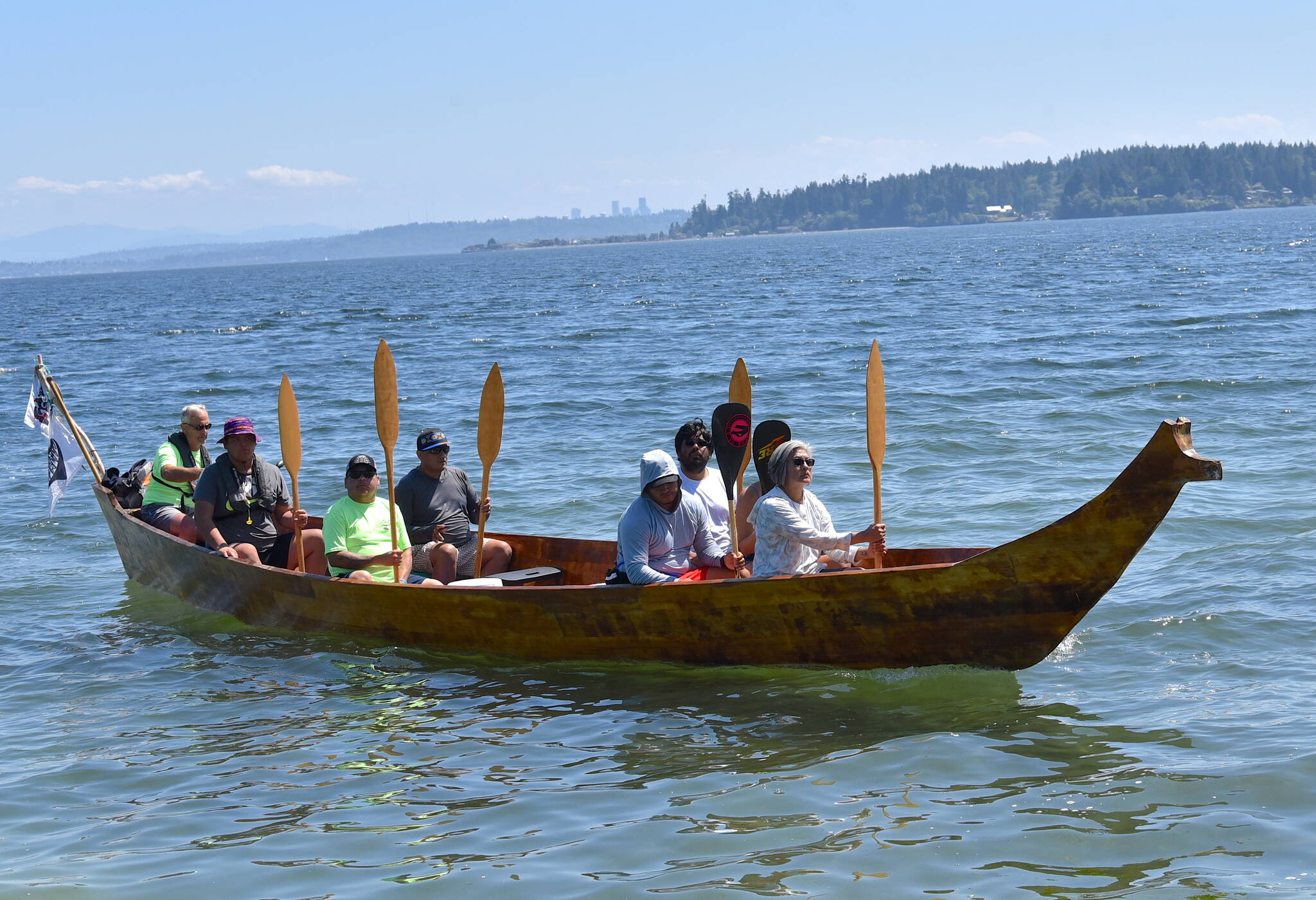After a four-year hiatus, the intertribal Canoe Journey returned to Kitsap County when 92 canoes arrived on the beach in front of the Suquamish Tribe’s House of Awakened Culture July 28.
Hundreds of people gathered to welcome canoe families to the first Canoe Journey since 2019 due to the pandemic. Their journey on the Salish Sea began on the Lummi Nation in Bellingham with stops at the Samish, Swinomish and Tulalip reservations before landing in Suquamish, where the tribe hosted about 9,000 people who traveled from Canada and other spots in the Northwest for a two-day celebration of song, dance, storytelling and gift giving.
At the water’s edge, Suquamish tribal members greeted the canoes with song and drums as each skipper asked for permission to come ashore.
“Thank you for bringing your canoe and your family culture and your healing medicine to the shared shores of the Suquamish people,” a tribal greeter said. “We have food. We have campgrounds. We have really comfortable seats for you to take a rest. Please come ashore and celebrate with us this weekend.”
Throughout the day, children played in the water, elders watched the procession of vessels move up the ramp while volunteers hoisted the long canoes to the grassy area in front of the House of Awakened Culture, the Suquamish Tribe’s longhouse and community gathering space.
Michael Sherlock, co-skipper of the “Namu” crewed by the Qwyano All Nations Canoe family from East Vancouver Island, said their journey began July 20 from Shallow Beach in Lady Smith Harbor and his canoe had performed well. “We’re getting closer. We’re nearly there,” he said of the final stop at Alki Beach in West Seattle.
Their canoe was not made from wood. It was opaque and light showed through the sides as it drifted by on the water, catching the attention of onlookers. Sherlock said it was developed by his grandfather who came from the Mount Robson area near the headwaters of the Fraser River in British Columbia. The canoe is different from the many wooden canoes hewn from a single log—theirs is a down-river canoe made from ballistic nylon stretched over a wooden frame covered with polyurethane that was pressed into his grandmother’s earth molds to give it its shape.
“She’s done us proud today. She does really well, and she got us here safely,” Sherlock said of the canoe.
That evening a traditional seafood dinner was prepared followed by an evening of celebration—the tribes that traveled the farthest distances were the first to take the floor.
On July 30, families paddled the final leg of the journey and will conclude the event with a six-day celebration at the Muckleshoot Reservation in Auburn Aug. 6.



